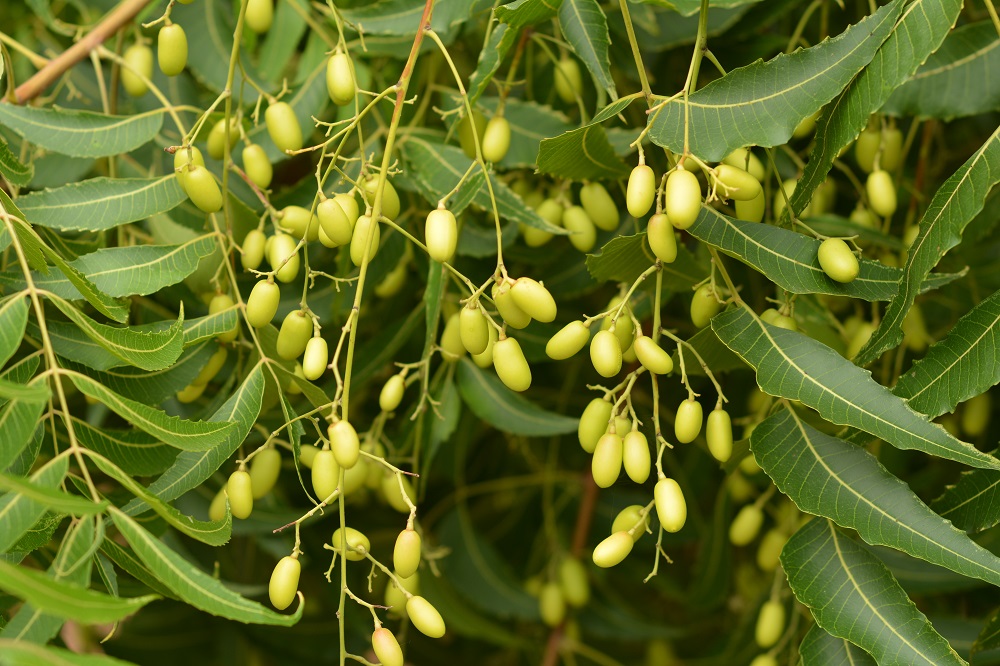
NEEM: "THE VILLAGE PHARMACY"
For the care of our plants on the balcony, at home or in our garden, we are often worried about having to resort - to keep them healthy or to make them live as long as possible - to unhealthy chemical fertilizers both for us and for them (especially if they are edible or fruit plants).
In reality, however, an effective solution to this problem is provided directly by nature: most plants produce chemicals to protect themselves from insect attacks. Among the hundreds produced by the Neem tree, one in particular, azadiractin, is a regulator of growth and has a strongly deterrent action against feeding and egg-laying by parasitic insects.
But what is Neem?
Neem is the term that identifies Azadirachta indica, an evergreen 20 meters high tropical tree native of Southeast Asia and later introduced to various tropical regions of the planet.
The evidence of the use of this plant in history is very ancient: from the 4th century BC in Indian Ayurvedic texts, Neem is called "cure of all ailments", "what keeps diseases away" and still today in rural Indian villages is known as "the village pharmacy".
So why is it called with these names?
All parts of Neem (roots, bark, latex, shoots, leaves, fruits, seeds) have numerous medicinal properties that have led the Indians to use them for centuries for the treatment of different ailments and which have recently also interested scholars, that are currently engaged in researches aimed at highlighting the hundreds of active compounds it is capable of producing and at determining the role of each individual chemical compound.
Its antibacterial and antifungal, detoxifying, anti-inflammatory, antimicrobial, exfoliating, antipyretic and antidiuretic properties make Neem a product widely used for skin and hair care in a variety of lotions, creams, soaps and cosmetics, for the preparation of drugs suitable for the treatment of diabetes, arthritis, blood diseases and digestive problems, but also and above all in the agricultural world, with a huge variety of functions.
The Neem fruit, in fact, is a drupe similar to the olive that contains one or two seeds from which, by pressing, the Neem oil is extracted – a natural repellent to soil insects and nematodes - which allows to prevent the use of insecticides harmful to plants and to the soil.
The residue from the pressing of the seeds, called panel or cake, retains a high percentage of active substances which are increasingly used in the protection and nutrition of plants. The Neem panel, in fact, is a vegetable substance that has a high percentage of organic nitrogen, which is fundamental for the physical structure of the soil. In addition, it has the property of slowing down nitrification of nitrogen in the soil, a natural process that leads to the formation of nitric nitrogen which, if available in excess, is retained in leaf vegetables and aromatics, making these products - once taken - harmful to health.
In addition, research by the "La Sapienza" University of Rome has shown that the use of the Neem cake has a toxic effect on the larvae of the tiger mosquito as it interrupts the development cycle in the stagnation water of the saucer.
Neem-based products, therefore, in the form of fertilizers and oils, provide a natural action and do not cause damage or other unpleasant consequences neither to the crops treated nor to the ecosystem of which they are part. They are therefore an excellent solution for the cultivation and care of completely organic products, healthy from the point of view of food and respect for the environment, which is not polluted in any way during their production and use.
To discover all Neem based products click HERE

 English
English Italiano
Italiano Español
Español Português PT
Português PT Français
Français Deutsch
Deutsch Polski
Polski Nederlands
Nederlands Svenska
Svenska
All comments